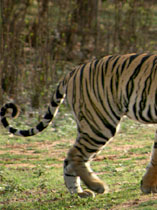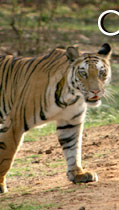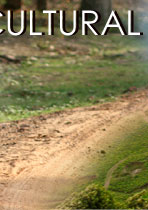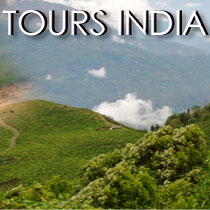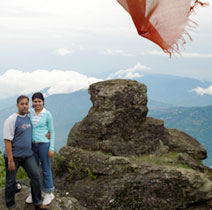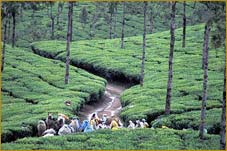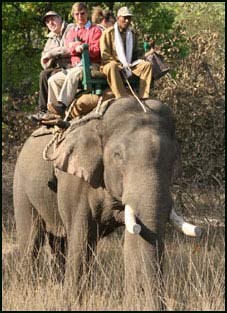Museum Tour of India
Duration : 11 Day / 10 Nights
Destination : Delhi, Agra, Gwalior, Jhansi, Khajuraho, Varanasi, Kolkatta
We offer highly personalized service – being a small yet dedicated company. We have designed out tours keeping in mind the interest of our clients. We are there to answer your questions, to give advice, provide insights, and develop ideas and to execute them for you. We ![]() have finely balanced our trips to combine cultural and historical factors.
have finely balanced our trips to combine cultural and historical factors.
Our trips cover all the important areas of India and can be combined together with other trips.
North India Museum Tour
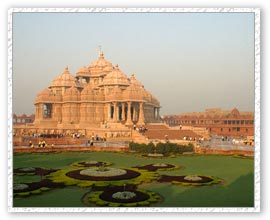 Day 01. Arrive Delhi
Day 01. Arrive Delhi
Late evening arrive Delhi and transfer to hotel for overnight stay.
Day 02. Delhi
Today we will do a full day sight seeing tour of Delhi including a visit to the World Heritage Sites of The Red Fort, Humayan’s Tomb and The Qutub Minar. We will also visit The National Museum of India. National Museum, New Delhi, today , has in its possession over 2,00,000 works of exquisite art, both of Indian and Foreign origin covering more than 5,000 years of our cultural heritage. Its rich holdings of various creative traditions and disciplines which represent a unity amidst diversity, an unmatched blend of the past with the present and strong perspective for the future, bring history to life. Apart from the collections of Pre-historic Archaeology, Archaeology, Jewellery, Paintings, Decorative arts, ![]() Manuscripts, Central Asian Antiquities, Arms and Armour, etc. Overnight at the hotel.
Manuscripts, Central Asian Antiquities, Arms and Armour, etc. Overnight at the hotel.
Day 03. Delhi – Agra
After breakfast we leave for Agra by surface. On arrival transfer to the hotel. After lunch we visit the Agra red Fort- A World Heritage Site. and its Jasmine Tower, an exquisite octagonal turret from which the Mughal ruler Shah Jahan would watch the workmen’s progress on the Taj Mahal. Views of the Taj Mahal from the Fort are amazing.
Evening we proceed to see the rarely visited Itmad-Ud-Daulah's Tomb, often referred to as the “baby Taj”. Along with the main building, the structure consists of numerous outbuildings and gardens. The tomb, built between 1622 and 1628 represents the transition between the first phase of monumental Mughal architecture - primarily built from red sandstone with marble decorations, as in Humayun's Tomb in Delhi and Akbar’s Tomb in Sikandra - to its second phase, based on white marble and pietra dura inlay - most elegantly realized in the Taj Mahal.
As the sun begins to go down, we will continue along this northern bank of the Yamuna River to a spot directly opposite the Taj known as the Mehtab Bagh (Moonlight Garden). At this beautiful site we will watch the sun go down over the river and the Taj.
Overnight at the hotel.
Day 04. Agra
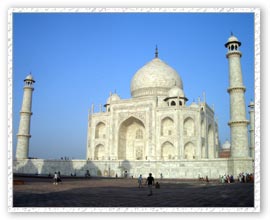 Early morning visit the Taj Mahal at sun rise built by the mighty Shah Jahan, the Taj is constructed of white marble inlaid with masterfully cut colored stones, some semi-precious. This mausoleum is one of the world's finest architectural wonders and the greatest monument to love ever built.
Early morning visit the Taj Mahal at sun rise built by the mighty Shah Jahan, the Taj is constructed of white marble inlaid with masterfully cut colored stones, some semi-precious. This mausoleum is one of the world's finest architectural wonders and the greatest monument to love ever built.
Later we take a tour of the Taj Museum, located with in the compound of the Taj Mahal. The museum comprises of three galleries in addition to the main hall and has on display various exhibits relating mostly to the construction of the Taj Mahal and to the period of its builders. Totally 121 antiquities are on display, which are broadly categorized as Mughal miniature paintings, manuscripts, government decrees, specimen of calligraphy, arms, utensils, plans and drawings of Taj Complex, paintings, specimen inlay work, marble pillars, etc.
In main hall the paintings of Shah Jahan and his most favourite wife Mumtaz Mahal both on ivory, encased in ornamental wooden frame, ![]() replicas of coins minted Akbarabad (Agra) are on display.
replicas of coins minted Akbarabad (Agra) are on display.
Paintings from the famous Persian epic Shahnama of Firdausi, an interesting manuscript of Chaihl Majlis dated to 1612 AD bearing the signature of Shah Jahan under the royal seal dated 4th February 1628 and other are displayed in this gallery.
We return of our hotel before taking a short train journey to Gwalior. On arrival transfer to the hotel. Evening free. Overnight at the hotel.
Day 05. Gwalior
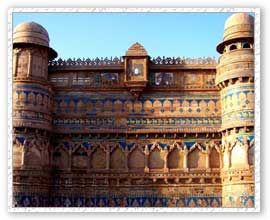 Morning we do a tour of the Majestic Gwalior Fort. This massive fort had the distinction for being the most invincible forts of India. It stands on a steep mass of sandstone and towers above the Gwalior city. The winding steep road to the fort is flanked by the statues of Jain tirthankaras, carved into the rock face. Within the fort are some of the most beautiful examples of the medieval architecture. The 15th Century Gujari Mahal, a monument of love built by Raja Mansingh Tomar for his Gurjar Queen. Another monument built by same king is Man Mandir Palace. Most of the palace stands stripped of its former glory. The Teli Ka Mandir, a 9th century structure with a height of 100 ft. It has blend of two different architectural styles. We also visit the Jai Vilas Palace, current residence of the Royal Family. It alsohas a museum offering a glimpse into the rich culture and lifestyle of the princely India.
Morning we do a tour of the Majestic Gwalior Fort. This massive fort had the distinction for being the most invincible forts of India. It stands on a steep mass of sandstone and towers above the Gwalior city. The winding steep road to the fort is flanked by the statues of Jain tirthankaras, carved into the rock face. Within the fort are some of the most beautiful examples of the medieval architecture. The 15th Century Gujari Mahal, a monument of love built by Raja Mansingh Tomar for his Gurjar Queen. Another monument built by same king is Man Mandir Palace. Most of the palace stands stripped of its former glory. The Teli Ka Mandir, a 9th century structure with a height of 100 ft. It has blend of two different architectural styles. We also visit the Jai Vilas Palace, current residence of the Royal Family. It alsohas a museum offering a glimpse into the rich culture and lifestyle of the princely India.
In the afternoon we visit the Gwalior Museum, the museum is enriched with a large and varied collection of antiquities, collected from Gwalior and its adjoining areas. Prominent places among them are Amrol in Distt. Gwalior, Naresar, Bateswar, Padawali, Mitawali, Sihonia in Distt. Morena, Kherat and Ater in Distt. Bhind, Terahi, Ranod and Surwaya in Distt. Shivpuri.Sculptural wealth of the museum can be classified under Shaiva, Vaishnava, Jaina and miscellaneous groups. They reflect the development of sculptural art and style in India from 1st century BC to 17th century A.D. to which they belong.
Sculptures from Mitawali are the earliest collection of the museum. They belong to Sunga and Kushana period. These are life size and colossal figures shown in heavy garments and ornaments. Noted sculptures of the period are Balarama, Kartikeya and Lakulisa.
Sculptural repertoire found from Nareshwar, Bateswar, Kherat, Ater, Rannod, Surwaya and Padawali are of Pratihara period (8th century A.D. to 10th century AD). Images of the period have retained the rich art traditions and plasticity of the Gupta period. They appear slim, slender, graceful and divine. Among them Nataraj, Ekmukha Sivalinga, Maha Pasupatinath Siva, Saptamatrika, Adinath, Parsvanath etc. are few examples, enriching the display of the museum.
Overnight at the hotel.
Day 06. Gwalior – Jhansi – Khajuraho
Morning we transfer to the train station for a short ride to Jhansi. On arrival we drive to the temple town of Khajuraho. In the temple architecture of India, the Khajuraho complex remains unique. One thousand years ago, under the generous and artistic patronage of the Chandela Rajput kings of Central India, 85 temples, magnificent in form and richly carved, came up on one site, near the village of Khajuraho. The amazingly short span of 100 years, from 950 AD - 1050 AD, saw the completion of all the temples, in an inspired burst of creativity. Today, of the original 85, only 22 have survived the ravages of time; these remain as a collective paean to life, to joy and to creativity; to the ultimate fusion of man with his creator.
Late afternoon we visit the world famous Western Group of Temples. In the evening we see the fascinating Son-et-Lumière spectacle which evokes the life and times of the great Chandela Kings and traces the story of the unique temples from the 10th Century to the present day.
Overnight at the hotel.
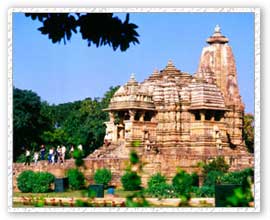 Day 07. Khajuraho – Varanasi
Day 07. Khajuraho – Varanasi
In the morning we visit the Khajuraho Museum. The present museum was established in 1967 making use of the representative collection of Khajuraho sculptures from the open-air museum. The most important sculptures of this museum represent Brahmanical, Jaina, and Buddhist faiths and are displayed in the five galleries inclusive of the main hall.
Later transfer to the airport for your flight to Varanasi. On arrival transfer to the hotel. Late evening we go to the Ghats along the banks of Holy river Ganges to see the evening prayers being performed.
Overnight at the hotel.
Day 08. Varanasi
Early morning boat ride on the Ganges to see the rituals being performed by the devotees on the banks of river Ganges. Return to hotel for breakfast. Later excursion to Sarnath- a place where Lord Budha gave his first sermon. Varanasi is very important city for Hindus and has a history of 5000 yr. A visit to this city is highly enriching and rewarding experience. We also visit the Sarnath Museum, this is oldest site museum in India. There are five galleries and two verandahs. The antiquities in the museum are datable from 3rd century BC to ![]() 12th century AD.
12th century AD.
The galleries have been christened on the basis of their contents, the northern most gallery is Tathagata while next one is Triratna. The main hall is known as Shakyasimha gallery and adjacent to it on south is named as Trimurti. The southern most is Ashutosh gallery, the verandahs on northern and southern side are named as Vastumandana and shilparatna respectively.
Entrance to the museum is through the main hall. The Shakyasimha gallery displays the most prized collections of the museum. In the centre of this gallery is the Lion Capital of the Mauryan Pillar which has become the National Emblem of India. Apart from the images of Buddha in different posture and Tara, the inscribed colossal standing images of Bodhisattva in red sand stone dedicated by BhikshuBala, octagonal shaft, umbrella are also exhibited.
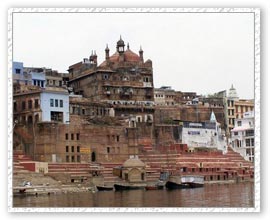 Triratna gallery exhibits the images of Buddhist deities and some associated objects. A standing image of siddhakavira which is a form of Manjusri, standing Tara, leopgraph, seated Bodhisattva Padmapani, stele depicting miracle of Sravasti, Jambhala alongwith vasudhara, depiction of Ramgrama stupa being protected by Nagas, Inscriptions of Kumardevi, stele depicting Astamahasthana (eight great places) related to Buddha’s life, Sunga railings are of considerable eminence.
Triratna gallery exhibits the images of Buddhist deities and some associated objects. A standing image of siddhakavira which is a form of Manjusri, standing Tara, leopgraph, seated Bodhisattva Padmapani, stele depicting miracle of Sravasti, Jambhala alongwith vasudhara, depiction of Ramgrama stupa being protected by Nagas, Inscriptions of Kumardevi, stele depicting Astamahasthana (eight great places) related to Buddha’s life, Sunga railings are of considerable eminence.
Tathagata gallery displays images of Buddha in different attitude, Vajrasattva, Bodhisattva padmapani, Nilakantha Lokesvara with a cup of poison, maitreya, preaching Buddha the most notable sculpture of Sarnath School of art.
Trimurti gallery contains pot bellied seated Yaksha figure, image of Trimurti (Brahama, Vishnu and Mahesh) Surya, Saraswati, Mahisasur mardini and some secular objects like figures of birds, animals, male and female heads as well as some stucco figures.
Ashutosh gallery exhibits Brahmanical deities like Shiva in different forms, Vishnu, Ganesh, Kartikeya, Agni, Parvati, Navagrahas, Bhairava and a colossal Andhakasuravadha (killing of demon Andhaka) by Shiva.
We return back to our hotel late in the evening for overnight.
Day 09. Varanasi – Kolkatta (Calcutta)
Today we will leave for the city of Joy – Kolkatta formerly known as Calcutta. We will take the flight if it is operational otherwise we will take a train.
Arrive Kolkatta and transfer to the hotel.
Day 10. Kolkatta
The highlight of day tour will be - The Heritage tour will give insight in to the historical aspect of old Calcutta. This square has many old historic buildings, to name a few- Silver Mint (1824-31) built in Greek style is presently in a dilapidated condition, The Writers Building- designed by Thomas Lyon as a trading house for East India Company in 1780 has 57 sets of identical windows on 3 storeys built like a barrack inside. The Old Mission Church, bulit by SWEDISH missionary Johann Kiernander was consecrated in 1770, General Post Office designed by Walter Granville in 1868 has a white dome and Corinthian pillars, The Raj Bhawan, once a residence of British Governors-General and Viceroys, it is now the home of Governor of West Bengal, next to it is the most important Gothic building of Kolkatta- the Calcutta High Court, built in 1872.
The Mother Teresa's Home- Mother Teresa came as a Loreto Sister in 1931 to teach in a local school in Kolkatta and 19 years later with Pope's permission started her Order of the Missionaries of Charity to serve the destitutes and the dying among the poorest. The nuns of this order always work in pairs and the mission has many homes, clinics and orphanges. Nirmal Hriday ( pure heart) was opened in ![]() 1952 for the dying among the poorest.
1952 for the dying among the poorest.
The Parenath Jain Temple is an ornate Digambar Jain temple built in central Indian Style in 1867 by a jeweller. The interior is richly decorated in European baroque and Italianate styles with mirrors and Venetian glass mosaics. The gardens have formal geomatric flower beds.
Belur Math was founded in 1899 by Swami Vivekanand, a disciple of Saint Ramakrishna. It is presently the international headquarters of Ramakrishna Mission and preaches the unity of all religions. Symbolising the belief of "Math" (monastery) it has Hindu, Christian and Islamic style of architecture.
Overnight at the hotel.
Day 11. Kolkatta
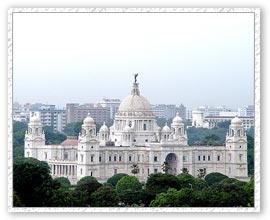 Our day today will start with a visit to the Ninth oldest regular Museum of the world, INDIAN MUSEUM, Kolkatta. This museum was established in the year 1814 at the Asiatic Society and was transferred to the present site in 1878. the Museum has over sixty galleries of Art, Archaeology, Anthropology, Geology, Zoology and Botany sections, spreading over ten thousand square feet area. Many rare specimens both Indian and Trans - Indian origin relating to Humanities and Natural Science are preserved and displayed in the galleries of these sections. It has a collection of more than 50,000 coins of gold, silver and other metals. It also has a mummy in its Egyptian section.
Our day today will start with a visit to the Ninth oldest regular Museum of the world, INDIAN MUSEUM, Kolkatta. This museum was established in the year 1814 at the Asiatic Society and was transferred to the present site in 1878. the Museum has over sixty galleries of Art, Archaeology, Anthropology, Geology, Zoology and Botany sections, spreading over ten thousand square feet area. Many rare specimens both Indian and Trans - Indian origin relating to Humanities and Natural Science are preserved and displayed in the galleries of these sections. It has a collection of more than 50,000 coins of gold, silver and other metals. It also has a mummy in its Egyptian section.
In the afternoon we visit the Victoria Memorial- a gift by Lord Curzon to Queen Victoria in honor of her commemoration and as a symbol of her Indian Empire. It has been designed in Italian Renaissance-Mughal style and built in white marble. It was built in 1921 and has many galleries with over 3000 exhibits. At the entrance it has an impressive 'weather vane' in form of a 5m. tall bronze figure of Victory, weighing over 3 tons.
Late evening transfer to the airport for your return International flight.
